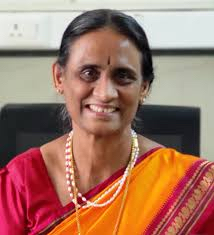
Women in transplant academia: reel or real ?
Vasanthi Ramesh1, Aashutosh M Hiremath1, Sunil Kumar1.
1General Surgery, Vardhaman Mahavir Medical College and Safdarjung Hospital, New Delhi, India
Introduction: The fifth UN-SDG aims to achieve gender equality and empower all women. SDG5 targets ending discrimination, achieving equal representation of women in leadership positions and equal rights to economic resources. Gender disparity is observed globally in transplant research. Study aims to analyse lacunae of women in transplant research publications as first and last authors, citations, sheds light on gender discrepancies that plague transplant academia.
Method: Research articles in the last 8 years on female authorship in transplant research were analysed from high impact surgical journals using key words female "authorship” “transplantation” from pubmed and google scholar including cross references.
Results: The association of surgeons of India reports 12% of its members as female. Women constitute 12% of US transplant workforce. Although underrepresented, studies point towards a rising trend in female authorship with more female first and female last authors in the last 20 years. An AJS review shows the proportion of female authors increased from 11.9% in 1997 to 21.4% in 2017. This trend is inconsistent with Netherlands reporting 55.1% and Japan 13.1% female authors. Brazil reported 23% rise in female first and 20% rise in female last authorships (2015-19). Women are less likely to hold middle authorship. A good predictor of research success, academic trajectory and leadership position is the h index and it was found that female authors had consistently fewer citations than males overall, with a mean difference of −4.09; at the level of professor −3.41, at associate professor level −2.09 and at assistant professor level −1.3. Discrepancy in research funding was noted, females consistently receiving lower funding. In 2016 TSANZ reported that 67% of all NHRMC competitive grants were awarded to men. The lancet reported fewer publications and citations by women were due to poor representation and participation leading to fewer awards and advancements forming a vicious cycle. A "transplantation" study reviewing women authorship across 5 high impact transplantation journals reported it was 1.69 times more likely to have a female first author in a study with a female last author. Special attempts were made by various journals and organisations to increase female participation. The lancet group launched “LancetWomen” project in 2017 reporting 79% of its editorial staff and 59% editor in chief as women advancing diversity, equity and inclusion. TTS Women in transplantation is organising a global perspective conference on this topic. Co first authorship would allow women to lead a high impactful research and time for child care commitments.
Conclusion: Female authorship is on the rise but a lot needs to be done to achieve equity. More funding, encouraging female mentorship and opening up key decision making positions for women can bring about a positive feedback cycle drawing in more young women into transplant academia and promote their advancement.
